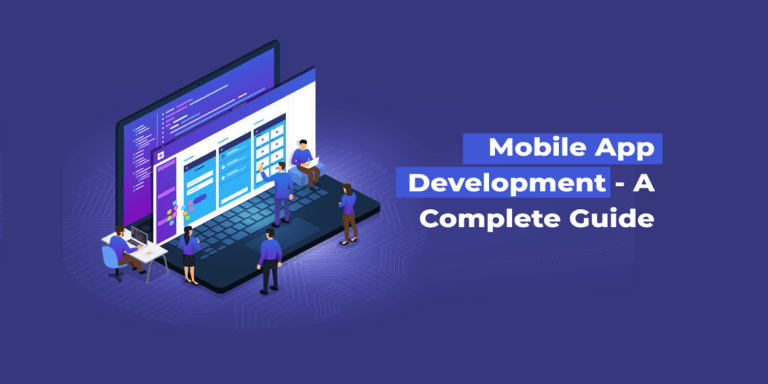So, it is the end of the year 2022, and every day the number of apps released is increasing at an enormous rate. And in the world, there are more apps than there are people. It is an undeniable fact that mobile apps have changed many dynamics of human beings. Moreover, the graph in mobile app development is increasing at a spiking rate. If you take a look at the stats, by the year 2026, smartphone users will increase to 7.5 billion.
Well, mobile apps are redefining many behaviors, especially in the consumer sector. Mobile apps bring any business better engagement, acquisition channels, and revenues. Many businesses have diverted their focus from reaching and making a staggering customer base.
What Is a Mobile App Development Process?
Mobile app development is a process of creating software for smartphones, tablets, desktops, and other devices. App development, includes coding, designing, and framing apps and is quite similar to traditional software development.
The biggest difference between mobile app development and software development is the mobile app’s ability to use native features on mobile or other devices. But mobile apps have leverage over other features like GPS, Bluetooth AI face recognition and other advanced features.
Apple and Android are among the leading markets of app development. So, these are the most recommended app development platforms by experts or businesses.
Cross-Platform App Vs Progressive Apps and Native Apps Vs Hybrid Apps
When you are looking to make an app always emphasize on Mobile app development guide. Maybe you have some ideas with your app type but is always imperative to have a type of app and what each of them has to serve.
Native Apps Vs Hybrid Apps
Native apps are typically built on mobile devices and are available on Android and iOS play stores. They have the fastest and most reliable user experience. Moreover, Native apps are developed using SDKs and also interact with other devices such as cameras, storage, or microphone.
Hybrid apps have both features of native and web apps. You can both download them on your phone or on the desktop. it is said that Hybrid apps are easier to develop and require less maintenance. Hybrid apps are written in HTML5 or JavaScript. But they also have the capability of built-in features on mobile devices.
Cross-Platform apps Vs Progressive Web Apps
Progressive apps are delivered on the web as opposed to a phone device. If you look at the WA apps, they have a similar look to native apps including the experience too. You can even send push notifications to users on the web but it can achieve fewer features on devices using native features.
Cross-platform apps have an easier building process as you can sync all the data. As it takes less time to develop, it is less expensive and you can spend on other areas of apps. But, with cross-platform apps, there are issues with the operating system.
Why Does Mobile App Fail? Learn From the Mistakes
Do you know 99.5% of consumer apps fail to work? Well, there are prominent reasons for it. So, at the same time when the app development market is growing it is also failing. Here are some reasons to comprehend before going into the app development process.
- Don’t copy and paste the ideas of another app. Duplicating and lack of original ideas are among the reasons for failure.
- Every app needs proper research and work, after that, you can expect some monetization. So, work on a viable monetization strategy. Moreover, before developing apps, set a robust marketing strategy.
- At times the apps are not tested properly and are left with massive issues. App development is a complex process therefore, you need to test for quality assurance.
- Failure in giving importance to user experience is another reason for the failure of apps. Many companies disregard the user’s feedback which slides away from improving future iterations.
Life Cycle of Mobile App Development
The development process is the crucial and active phase in the development guide. This development process follows agile coding, user roles, and incorporating other features and functionalities. Every app development process must have the following stages.
1. Mobile App Development Process
The mobile app development process is a simple process if it is broken down into steps or formulated into segments. Some of the steps are,
- Brainstorm the ideas and make a strategy.
- Start researching and analyzing the market.
- Work on wireframes and mockups
- Choose the most suitable platform
- Build the UX of the app.
2. Test The Apps
As much as app development is important, QA testing is important in developing to know its performance. The QA organizes various tests to see bugs and errors. If there are any, they are to be resolved right away.
3. App Launch and Deployment
After the apps are posted in the stores, it may take some time to review. It depends on how the app is fit for iOS and Android. Your app will be available on the Android play store after a few hours of submission.
4. Security and Testing of the App
This is another essential in app development once the app is launched. The testing is to see if everything is operational and see if they do what they say. Typically, an app is tested for inline media previews, support, filters, and other vital components.
5. App Maintenance and Support
This iterative process includes technical performance and the benchmark set against other apps. Both app maintenance and support are to see if the app is continuously bug-free. In this process, developers look at user experiences.
The Closing Note
This guide can be helpful for any business that seeks to develop an app. If you are not familiar with anything related to app development, take a look at the blog. So, just get a hold of the prerequisite’s ad to get on board.


0 Comments